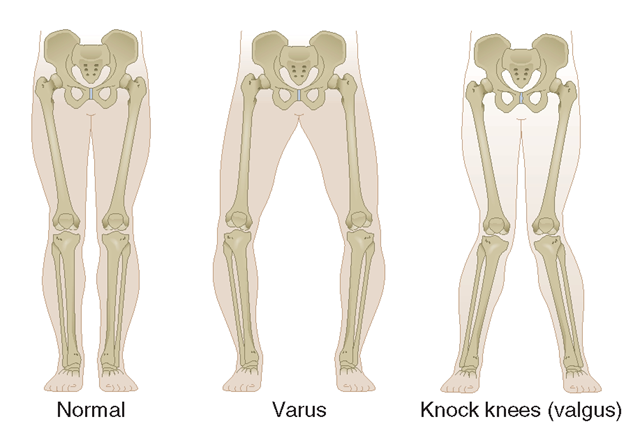Varus and valgus position are related to development of knee osteoarthritis, however their function in circumstance illness is less certain. Radiographic calculates of accident knee osteoarthritis might be getting early development instead of disease creation.
The words valgus and varus relate to angulation (or bowing) within the iron of a bone or at a joint. It is discovered by the distal portion becoming more medial or lateral compared to it needs to be. If the distal portion is a lot more lateral, it is usually known as valgus. If the distal component is a lot more medial, it can be known as varus. Consequently, whenever the top of a joint areas medially, the deformity, if any kind of, can be known as valgus, as the distal area factors laterally.

A varus angulation is known as the distal part of a bony section deviates in a medial location. A valgus angulation is simply the reverse.
In a valgus angulation the distal part of the bony section deviates in a lateral location. We’ll evaluate 2 samples of varus and valgus angulations in the lesser extremity to display methods to result in particular difficulties.
Topics Covered
Varus and Valgus Mnemonic?
It is crucial to keep in mind that the majority of proximal section of a bone or joint is the fundamental purpose which varus and valgus perspectives are pertaining to the position in a regular condition, which does not need to be zero.
The L of “lateral” is also in valgus, however not in varus. As additionally keeping in mind that the path of the distal portion is important: distal (more) lateral indicates valgus and distal (more) medial means varus.
When describing cranial alignment issues you can find just two phrases that lots of men and women become mixed upward and thus miss their bio mechanical significance. The conditions of both valgus and varus make reference to alignment of rectal sections. Some mistakenly say that they truly are defined by angulation in the knee. Yet valgus and varus angulation may appear in a lot of locations. Let us take a glance at how they’re defined and exactly where they happen most often.
What is Knee Malalignment (Varus and Valgus)?
In a completely aligned correctly knee, mass is spread equally across the knee joint. But, not all knees are correctly arranged. If the knee joint bows noticeable or inward, this spreads mass unevenly across the combined which is known as knee malalignment.
Causes Knee or Elbow Deformities (Varus and Valgus)?
There are multiple causes of malalignment of the knee. The primary rationale is genetic, which indicates it may run in your family. Genetic knee malalignment will exhibit bilaterally in both knee or leg.
The 2nd most prevalent source of (Varus and Valgus) knee malalignment is prior injury, frequently out of the tibial plateau fracture or an expansion plate injury for being a child. In circumstances where by prior injury has caused the malalignment, the deformity normally gift suggestions unilaterally (only on one leg).
Treatment for (Varus and Valgus) knee malalignment?
Treatment method typically starts off conservatively, employing anti-inflammatories and physical remedy. Even a special kind of knee brace is also utilized to take to and fix the deformity slightly.
Over and above conservative therapy, these circumstances typically will require operation. The operation typically consists of an overall total knee alternative to patients more than 50 Years old. This will definitely correct the deformity and also cope with all the osteoarthritis that’s inevitably grown in the knee joint.
In young patients, at which significant osteoarthritis hasn’t yet demonstrated, an operation termed an osteotomy might be done. This is an operation wherever bone in the leg (that the femur/thigh bone in Valgus deformity along with also the tibia/shin bone in Varus deformity) is minimize in order to realign the knee into the proper position.
Sign and Symptoms of (Varus and Valgus) knee malalignment
The First sign or symptom is pain in knee, leg or elbow. This is sometimes pain in the foot or ankle, however more often this pain is in the knee. This is often pain in the outside (lateral) portion of their spinal column in scenarios of Valgus deformity as well as also the inside aspect of this knee in instances of Varus deformity.
The surplus pressure using one compartment of the knee increases the risk of developing osteoarthritis for patients suffering from both Valgus and Varus deformities. Odds are, the more you’ve already been living with those deformities, and also the further pain you’re likely to experience, especially in acute instances.
Recovery You Should expect after surgery to correct knee malalignment?
The restoration will soon be slightly different for someone undergoing a knee substitute versus an osteotomy. A knee-replacement gives you the ability to stroll with entire weight-bearing immediately and typically requires anywhere from 6-12 weeks to fully recuperate. Even an osteotomy, on the opposite side, requires one to really be on crutches to get 6-8 months and typically normally takes from 6-8 weeks to fully recuperate.
More Information About Varus vs Valgus (Elbow, Force, Stress)
Varus thrust Valgus push is believed significantly less prevalent compared to varus push; the incidence of each and every uncertain. Racial differences in risk factors can help explain variations in the pure history of knee osteoarthritis. Our objectives are: determine exactly the frequency of varus and valgus push in African-Americans and Caucasians; identify factors associated with push existence.
Even the Osteoarthritis Initiative Cohort includes people with or at increased risk to come up with knee osteoarthritis. Trained examiners evaluated induce attendance by gait observation.
African-Americans In contrast to Caucasians experienced lesser odds of varus push and larger odds of Valgus throw, findings which might help explain the difference amongst those Bands in the design of osteoarthritic involvement in the knee.
Conclusion
Varus although not valgus balance enhanced the chance of circumstance tibiofemoral inflammation of a joint. In knees with osteoarthritis, varus and valgus line each enhanced the liability of development in the biomechanically stressed out area.




